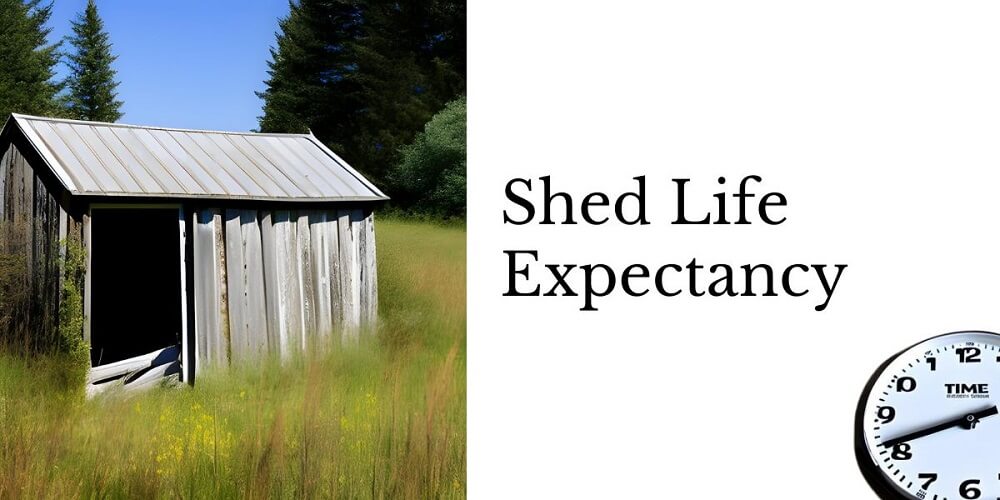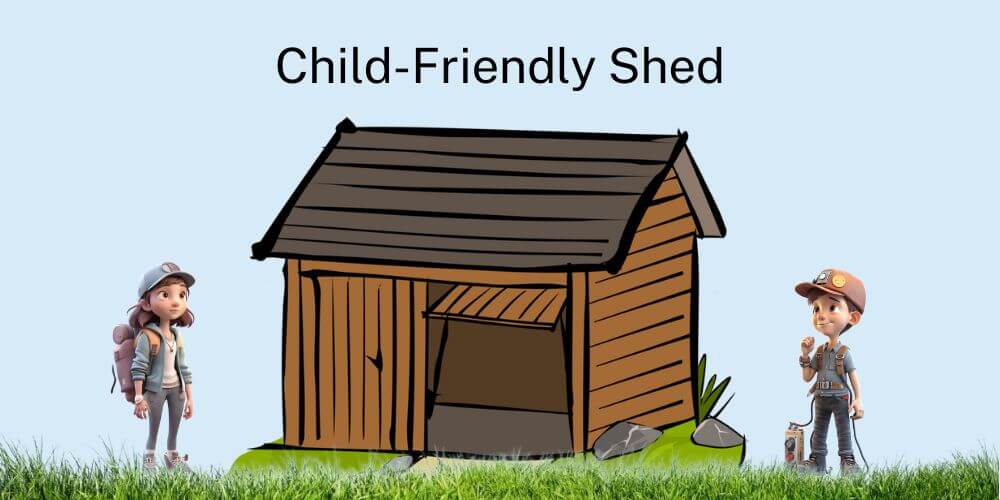What is the life expectancy of a shed? The answer to this question depends on several factors, such as the quality of the materials used to build the shed, the climate in which it is located, and how well it is maintained. A well-built shed made from high-quality materials can last for many years, while a poorly constructed shed made from low-quality materials may only last a few years.
In addition to the quality of the materials used, the climate in which the shed is located can also affect its lifespan. Sheds located in areas with harsh weather conditions, such as high winds, heavy rain, and snow, may not last as long as sheds located in milder climates. Regular maintenance, such as painting, treating the wood, and repairing any damage, can also help extend the life of a shed.
Factors Affecting the Life Expectancy of a Shed
Weather Conditions
The weather conditions that a shed is exposed to can have a significant impact on its life expectancy. Sheds that are located in areas with high levels of rainfall or snowfall, for example, are more likely to experience water damage and rot. Sheds that are exposed to high levels of sunlight and heat may experience warping and cracking of the wood or other materials used to construct the shed.
Additionally, sheds that are located in areas with high winds or storms may be more likely to sustain damage, such as missing shingles or siding. It is important to consider the climate in your area when selecting a shed and to take steps to protect it from the elements, such as applying weather-resistant coatings or adding additional support structures.
Material Used
The type of material used to construct a shed can also impact its life expectancy. Sheds made from low-quality materials or those that are not designed for outdoor use may deteriorate more quickly. For example, sheds made from particleboard or other composite materials may not hold up as well as those made from solid wood or metal.
It is important to choose a shed made from high-quality materials that are designed to withstand the elements.
Maintenance
The level of maintenance and upkeep that a shed receives can also impact its life expectancy. Sheds that are neglected or not properly maintained may deteriorate more quickly than those that are regularly cleaned and inspected.
Regular maintenance tasks for a shed may include cleaning the exterior, checking for signs of damage, and applying weather-resistant coatings or sealants. It is important to follow the manufacturer’s recommendations for maintenance and to address any issues as soon as they arise to prevent further damage.
Average Life Expectancy of a Shed
When it comes to sheds, the life expectancy can vary greatly depending on a number of factors. Some of the key factors that can impact the lifespan of a shed include the materials used, the quality of construction, the location of the shed, and the climate and weather conditions in the area.
On average, a well-built shed made from high-quality materials can last anywhere from 10 to 20 years or more. However, sheds made from cheaper materials or constructed poorly may only last a few years before needing significant repairs or replacement.
One of the most important factors to consider when it comes to shed longevity is the type of material used. Sheds made from wood, for example, are more susceptible to rot and decay over time, especially if they are not properly maintained. Metal sheds, on the other hand, are more durable and resistant to the elements, but may still rust or corrode over time.
Another important consideration is the location of the shed. Sheds that are exposed to harsh weather conditions, such as heavy rain, snow, or wind, may deteriorate more quickly than those that are protected from the elements. Additionally, sheds that are located in damp or humid areas may be more prone to rot and decay over time.
Overall, the life expectancy of a shed can vary widely depending on a number of different factors. By choosing high-quality materials, ensuring proper construction and maintenance, and protecting the shed from the elements, homeowners can help to extend the lifespan of their shed and ensure that it provides reliable storage for many years to come.
Life Expectancy of a Shed – Final Thoughts
Regular inspection and maintenance of the shed can also help identify any potential issues early on, preventing costly repairs or replacements down the line. This includes cleaning and treating the shed periodically, repairing any damage as soon as it’s noticed, and ensuring proper ventilation to prevent moisture buildup.
Ultimately, the life expectancy of a shed is directly proportional to the care and attention it receives. By investing in quality materials, proper construction and maintenance, and protecting it from the elements, homeowners can maximize the shed’s lifespan and continue to use it as a reliable storage space for many years to come.
5 best plastic sheds – 5 best metal sheds – 5 best wooden sheds



